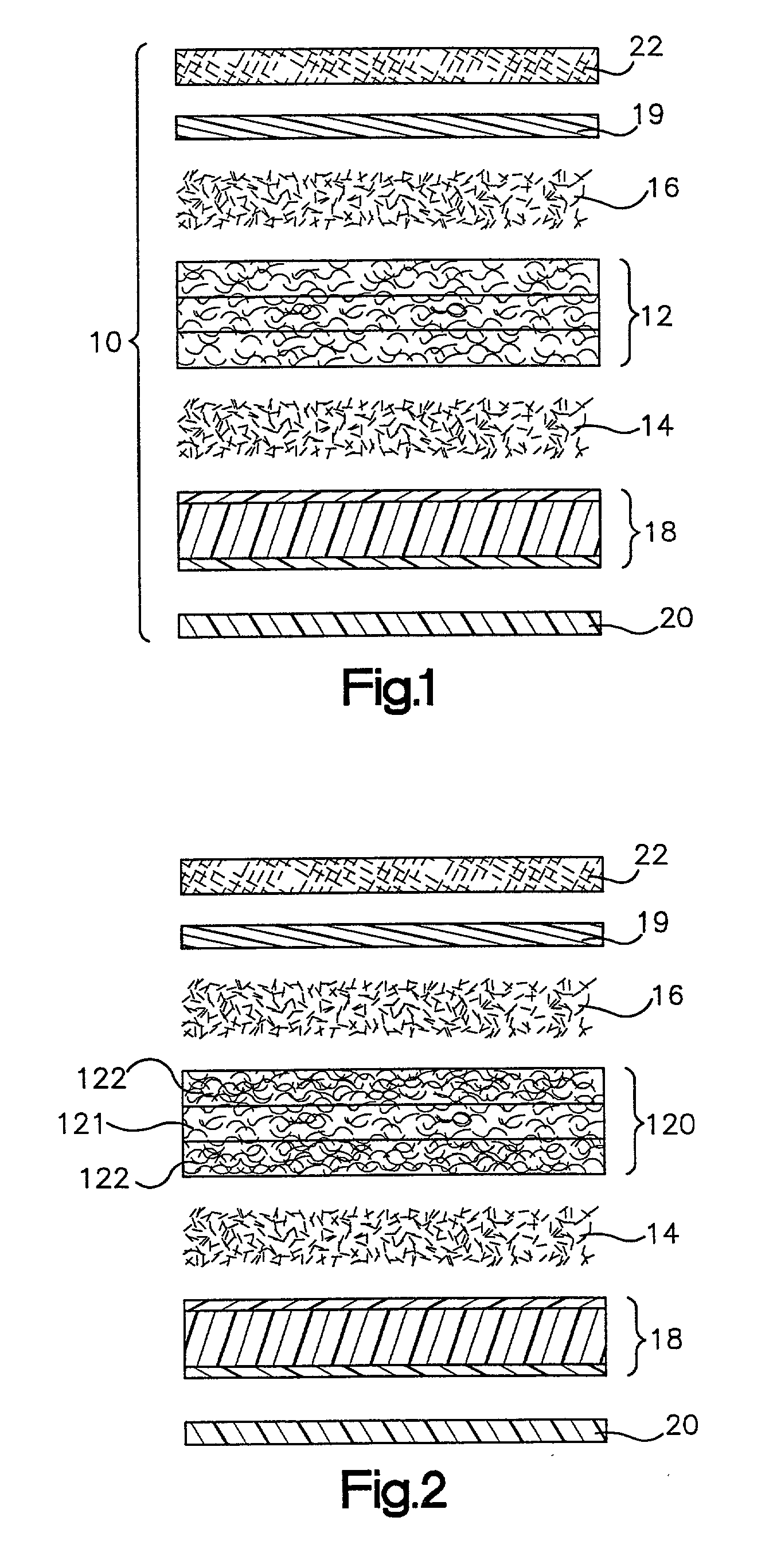Laminated structures with multiple denier polyester core fibers, randomly oriented reinforcement fibers, and methods of manufacture
a technology of polyester core fibers and laminated structures, applied in the direction of woodworking apparatus, packaging, synthetic resin layered products, etc., can solve the problems of low acoustical attenuation, inefficient mass production type of construction, and particularly difficult panels, so as to improve sound absorption and structural properties
- Summary
- Abstract
- Description
- Claims
- Application Information
AI Technical Summary
Benefits of technology
Problems solved by technology
Method used
Image
Examples
Embodiment Construction
13. As schematically represented in FIG. 1, the invention includes a laminate, collectively referenced at 10, made up of combined materials including a core 12 made of non-woven randomly intertwined polymeric staple fibers of differing deniers (or fineness as determined by weight per unit length) per filament, such as for example 0.9, 4.0, 15 and 45, and generally in a wide range from 0.1 to 100. Although these particular denier values are given as examples, the invention is not limited to these values. The more significant factor is that the deniers are combined in a widely varying range which has been determined by the inventors to provide the desired mechanical, bonding and acoustical properties. In other words, it is the combination of fibers of different deniers, rather than the specific denier values combined, which improves the properties of the laminate 10. In particular, it has been found that the fibers with relatively low deniers of, for example, 0.9, contribute substanti...
PUM
| Property | Measurement | Unit |
|---|---|---|
| lengths | aaaaa | aaaaa |
| lengths | aaaaa | aaaaa |
| thickness | aaaaa | aaaaa |
Abstract
Description
Claims
Application Information
 Login to View More
Login to View More - R&D
- Intellectual Property
- Life Sciences
- Materials
- Tech Scout
- Unparalleled Data Quality
- Higher Quality Content
- 60% Fewer Hallucinations
Browse by: Latest US Patents, China's latest patents, Technical Efficacy Thesaurus, Application Domain, Technology Topic, Popular Technical Reports.
© 2025 PatSnap. All rights reserved.Legal|Privacy policy|Modern Slavery Act Transparency Statement|Sitemap|About US| Contact US: help@patsnap.com


